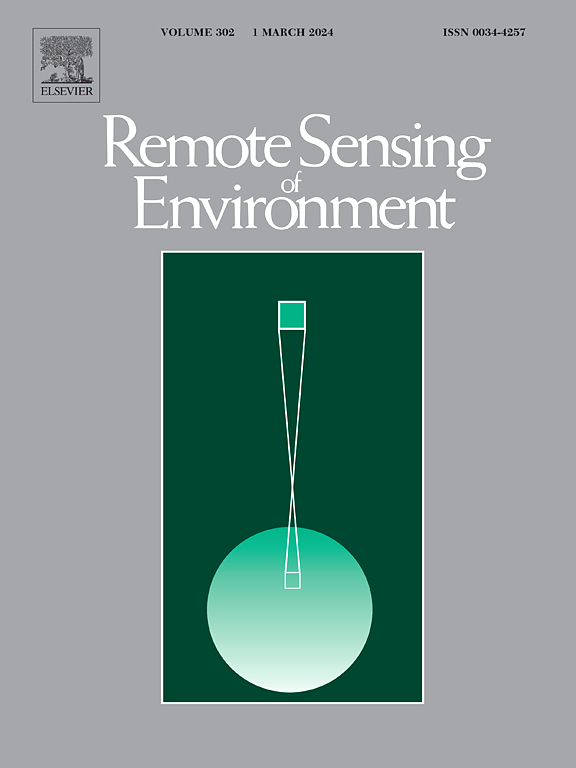kNDMI: A kernel normalized difference moisture index for remote sensing of soil and vegetation moisture
IF 11.1
1区 地球科学
Q1 ENVIRONMENTAL SCIENCES
引用次数: 0
Abstract
Optical remote sensing of soil and vegetation moisture index is widely recognized as a vital indicator for monitoring soil moisture and drought stress. Nevertheless, the traditional soil and vegetation moisture index does not adequately capture enough higher-order relations between spectral channels, leading to limited sensitivity to soil moisture variations in certain value ranges and difficulties in reconciling discrepancies in soil moisture numerical distribution across temporal and spatial scales. In this paper, based on the concept of kernel method, a new soil and vegetation moisture index, Kernel Normalized Difference Moisture Index (kNDMI), was formulated to capture more spectral channel information. Global kNDMI were calculated using MODIS spectral reflectance product. The effectiveness of kNDMI in responding to moisture and drought was evaluated using the European Space Agency (ESA) Climate Change Initiative (CCI) dataset, the Soil Moisture Active and Passive (SMAP) dataset, and meteorological reanalysis data. Results demonstrated that: 1) The kNDMI significantly outperforms traditional remote sensing moisture indices in global soil moisture monitoring on the temporal scale, particularly in monitoring SMAP soil moisture dataset. The performance improvement of kNDMI compared to the best traditional index ranges from 107.1 % to 127.8 %, with the most notable advantages observed in mid-to-high latitude regions and areas with moderate vegetation cover, such as croplands, shrublands, and grasslands. 2) The average spatial correlation between kNDMI and CCI soil moisture exceeds that of the best traditional moisture index, Normalized Difference Infrared Index (NDII SWIR3-based), by approximately 0.02 to 0.04. However, kNDMI's performance in capturing SMAP's spatial distribution is slightly inferior to that of NDII (SWIR3-based). 3) kNDMI proves to be more effective than traditional moisture indices in monitoring short-term meteorological droughts on 1- to 3-months scale. Furthermore, kNDMI significantly outperforms traditional indices in soil drought monitoring, showing an improvement range of 59.09 % to 169.37 %. 4) The optimal sigma parameter for kNDMI on the temporal scale exhibits adaptive characteristics related to the dryness of the pixels; the drier the pixel, the more its numerical distribution resembles a smoother Gaussian Radial Basis Function (RBF) kernel. The maximum parameter setting method, which combines the advantages of both adaptive and fixed parameters, yields the best performance in the kNDMI tuning process on global scale.
求助全文
约1分钟内获得全文
求助全文
来源期刊

Remote Sensing of Environment
环境科学-成像科学与照相技术
CiteScore
25.10
自引率
8.90%
发文量
455
审稿时长
53 days
期刊介绍:
Remote Sensing of Environment (RSE) serves the Earth observation community by disseminating results on the theory, science, applications, and technology that contribute to advancing the field of remote sensing. With a thoroughly interdisciplinary approach, RSE encompasses terrestrial, oceanic, and atmospheric sensing.
The journal emphasizes biophysical and quantitative approaches to remote sensing at local to global scales, covering a diverse range of applications and techniques.
RSE serves as a vital platform for the exchange of knowledge and advancements in the dynamic field of remote sensing.
 求助内容:
求助内容: 应助结果提醒方式:
应助结果提醒方式:


